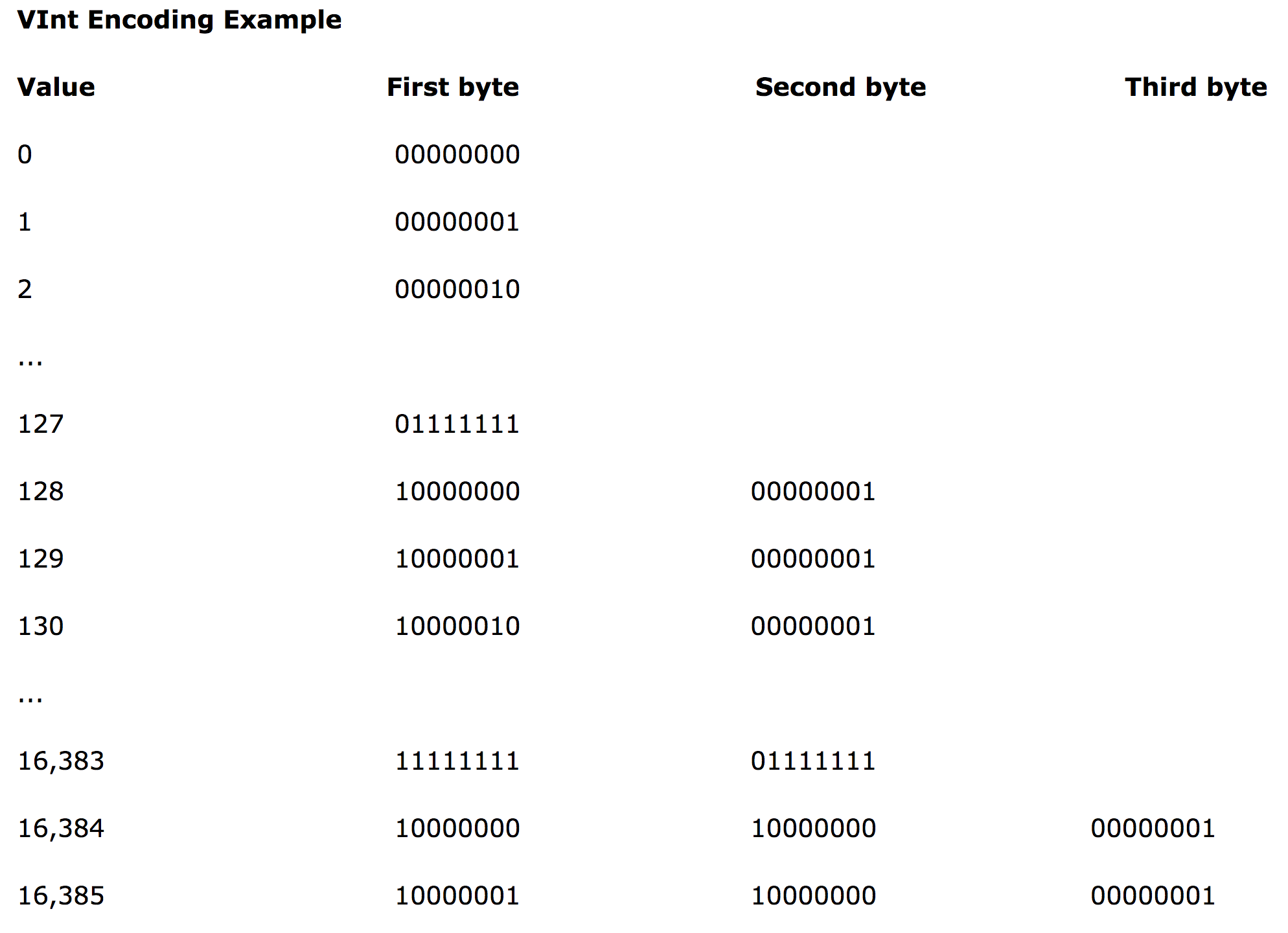vint–针对int型的压缩格式
版权声明 本站原创文章 由 萌叔 发表
转载请注明 萌叔 | https://vearne.cc
1. 引言
vint是lucene所采用的针对int型的压缩方法。
对于绝大多数语言,int型都占4个字节,不论这个数据是100、1000、还是1000,000。vint的理念是采用可变长的字节,来表示一个整数。数值较大的数,使用较多的字节来表示,数值较少的数,使用较少的字节来表示。
2. vint的格式定义
A variable-length format for positive integers is defined where the high-order bit of each byte indicates whether more bytes remain to be read. The low-order seven bits are appended as increasingly more significant bits in the resulting integer value. Thus values from zero to 127 may be stored in a single byte, values from 128 to 16,383 may be stored in two bytes, and so on.
每个字节仅使用第1至第7位(共7bits),第8位作为标识,表明(为了得到这个整型)是否需要读取下一个字节。
从下面的例子我们可以看出
整数1 的2进制表示为 "00000001", 仅用1个字节
整数130 的2进制表示为 "10000010 00000001" 仅用2个字节

由于使用vint压缩格式以后,每个字节仅有7个有效位,因此它的最大占用字节数为 Math.ceil(32/7) = 5 需要5个字节,表示任意一个int型占用的字节数是1至5,以平均2.5来计算, 相比原有的4字节表示方法,节约空间37.5%
3. 实现
3.1 编码
编码代码可参考
lucene 3.x
package:org.apache.lucene.store
DataOutput.java
public final void writeVInt(int i) throws IOException {
while ((i & ~0x7F) != 0) {
writeByte((byte)((i & 0x7F) | 0x80));
i >>>= 7;
}
writeByte((byte)i);
}
Negative numbers are supported, but should be avoided.
注意:这里代码注释按时我们,应避免对负数使用vint压缩格式
3.2 解码
解码代码可参考
lucene 3.x
package:org.apache.lucene.store
DataOutput.java
public int readVInt() throws IOException {
byte b = readByte();
if (b >= 0) return b;
int i = b & 0x7F;
b = readByte();
i |= (b & 0x7F) << 7;
if (b >= 0) return i;
b = readByte();
i |= (b & 0x7F) << 14;
if (b >= 0) return i;
b = readByte();
i |= (b & 0x7F) << 21;
if (b >= 0) return i;
b = readByte();
i |= (b & 0x0F) << 28;
if ((b & 0xF0) == 0) return i;
throw new IOException("Invalid vInt detected (too many bits)");
}
4. 总结
其实除了vint,之外还有vlong--针对long型的压缩格式。其原理和vint完全一样,这里不再赘述。lucene中有很多精妙的设计,值得我们学习。
5. 参考资料
请我喝瓶饮料
